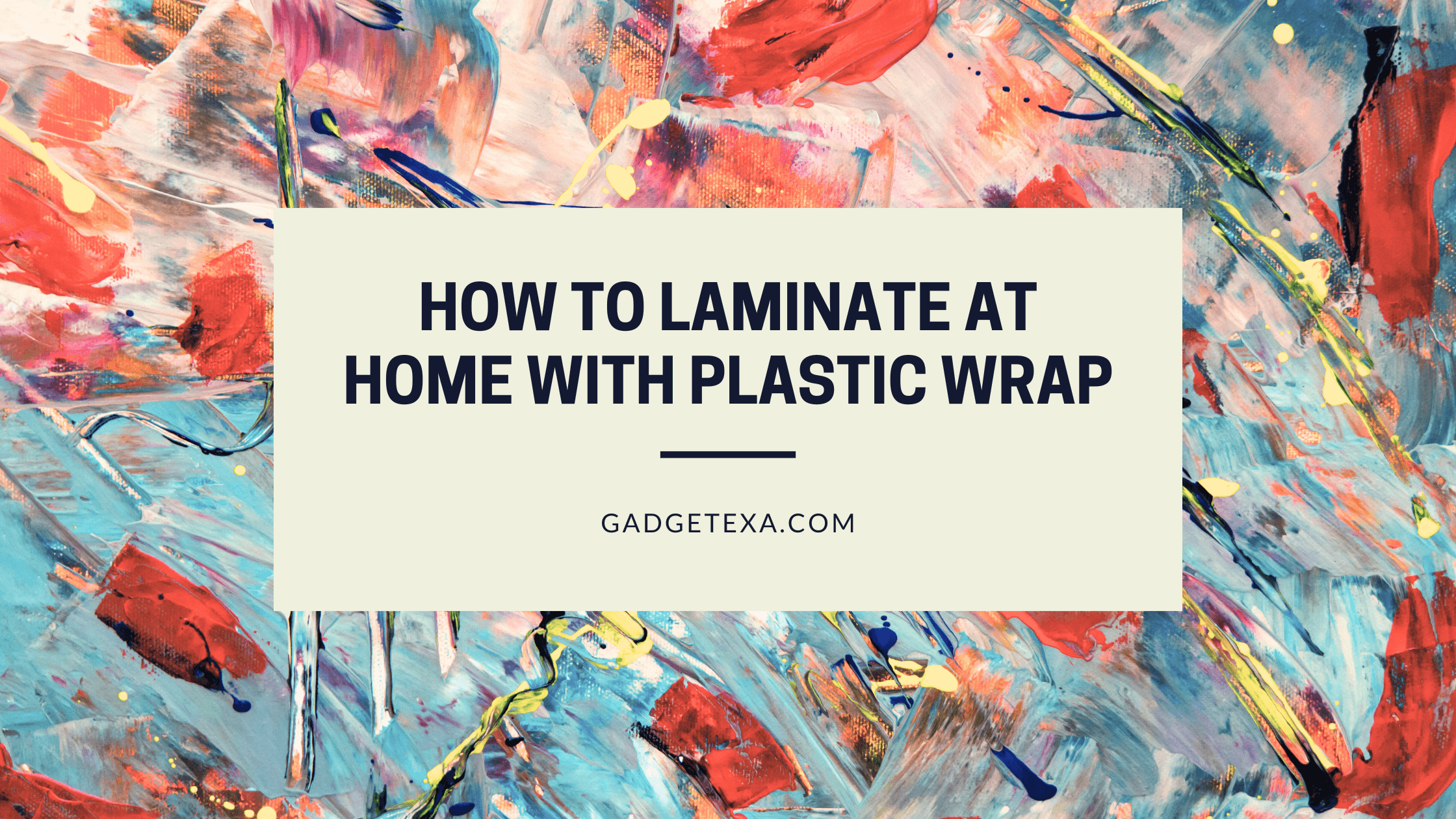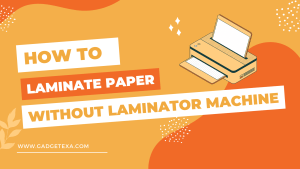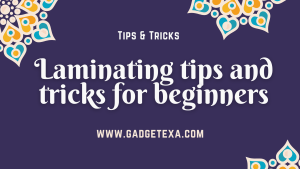Getting Started
To get started on laminating at home with plastic wrap, you need to make sure you have the right materials and choose the appropriate plastic wrap that suits your needs. The materials needed and choosing the right plastic wrap are key aspects of getting your lamination process off to the right start.Materials Needed
For a successful start, it’s key to collect all the essentials. These basics are necessary for adjusting to the project’s requirements.
| Software tools and applications. | Hardware components. |
| Instructions or guidelines. | Research materials and reference books. |
| Online resources for referencing and exploring. | Access to a potential community support system. |
Details can be crucial in various scenarios. The tiny details separate success and failure often. So, preparation is crucial for sublime results.
Every project has its unique demands that need special materials made for it. Analyze the usage of any material before using it, making sure it fits its purpose.
Materials Needed dates back to forever. Everything from baking a cake to building an empire requires proper material procurement. Wrap up your food like a burrito to avoid leftovers becoming a science experiment!
Choosing the Right Plastic Wrap
When it comes to choosing plastic wrap, there are some factors to think about. Here are key tips to help you decide.
Types of Plastic Wrap and Their Uses:
- PVC – Durable, Clings Tightly, Freezer and Microwave-friendly.
- PE – Flexible, Eco-friendly, Good for Fruits and Veggies.
- PVDC – Barrier Properties, Aroma and Flavor Preservation.
Cheap wraps often tear and don’t cling as well. Get one that’s microwave or freezer-friendly.
Pro Tip: Keep your hands dry! Moisture affects clinginess. Also, prep the surface or your DIY could look like a kid’s artwork.
Preparing the Surface
To prepare a surface for laminating at home with plastic wrap, cleaning and drying the surface are crucial steps. These steps ensure that the surface is free from dust, dirt, and moisture, which can affect the quality of the lamination. In the following sub-sections, we’ll go over the details of cleaning the surface and drying the surface, so you can have a smooth lamination process.Cleaning the Surface
Surface prep is essential to get a flawless finish. It means getting rid of dirt, dust, grease, oil, and other foreign materials. To clean it smoothly, here’s a 5-step guide:
If there’s mold or mildew, mix one-part bleach with three parts water. Use a brush to scrub gently, rinse with water, and dry completely.
Safety gear like gloves and goggles are important to wear before cleaning. The Spruce DIY website says, “Surface prep is key to get professional results.” Don’t rely on air-drying; it won’t dry your surface any faster.
Drying the Surface
Clean the surface first. Then, ‘Moisture Elimination’ is a must! This enhances bonding and adhesion of materials. To dry the surface, use these five steps:
- Wipe away moisture with a cloth or sponge.
- Use fans or air movers for faster drying.
- No new coating until the surface is dry.
- Consult a professional for advanced equipment like dehumidifiers and temperature regulators.
- Monitor humidity levels with hygrometers.
Remember – dryness can still hide humidity. So, give it extra drying time. An oscillating fan 3-4 feet away helps too. Inadequate preparation can lead to coatings failure, so wrap it up like a mummy to preserve the surface!
Applying the Plastic Wrap
To apply plastic wrap for laminating your documents or cards with ease, follow these sub-steps – cutting the plastic wrap to size, placing the plastic wrap onto the surface. These steps will assist you in achieving a smooth, bubble-free finish for your laminated items.Cutting the Plastic Wrap to Size
To apply plastic wrap well, it’s important to cut the right size. Here’s how:
Unroll some plastic and measure against the object you want to cover. Estimate how much you need, then cut a section twice as long.
Fold the sheet in half, tacky side in, to halve its length. Place one edge of the plastic on the surface and unroll as you go, maintaining tension.
Cutting too little could leave parts uncovered, and cutting too much could cause bunching up. For round objects, cut multiple smaller sheets instead of one big one.
Tools can help with precise measurements when cutting plastic wrap, but scissors and estimation often suffice for household scenarios.
I learnt the hard way that math can be useful when it comes to plastic wrap. So remember – wrap it tight like a burrito, or else your leftovers will be as dry as your grandma’s Thanksgiving turkey!
Placing the Plastic Wrap onto the Surface
When you’re prepping food, cover it with plastic wrap – it’s a great way to stop contamination and keep it fresh! Here’s how:
- Pull out a piece of plastic wrap big enough to cover the dish.
- Place the wrap over the food and press down – it should stick to the surface.
- Use a spoon or spatula to make sure there aren’t any air bubbles or wrinkles.
- Trim off any excess plastic with scissors.
No air should be between the wrap and food. Don’t stretch the wrap too much either – it could create holes or gaps.
For optimal preservation, store food-wrapped-in-plastic in an airtight container or resealable bag. Remember to smooth out your plastic wrap like you’re ironing out the wrinkles in your life – no therapy bill required!
Smoothing Out the Wrinkles and Bubbles
To smooth out the wrinkles and bubbles while laminating at home with plastic wrap, you can incorporate some easy-to-follow techniques. Using a credit card or squeegee can help you achieve a much smoother surface. Additionally, eliminating air pockets is vital in preserving the quality of your lamination.Using a Credit Card or Squeegee
Use a credit card or squeegee to easily smooth out wrinkles and bubbles in vinyl graphics!
Start with a flat and sturdy tool, like the edge of a credit card, and apply even pressure. Work from the center outwards, pushing out air pockets and firmly affixing the graphic.
For stubborn bubbles, use the corner or edge of the card to target them individually. Squeegees with felt or foam edges are great for larger graphics.
Remember to take your time and be patient! The slightest wrinkle can cause massive inconveniences later on. Smooth carefully for a perfect finish – nothing ruins it like a bubble popping up!
Removing Air Pockets
Air pockets can cause wrinkles and bubbles during certain processes. So, it’s essential to make sure they are gone! Here are three steps to do this:
- Tap the surface using your hands or a tool.
- Smooth out any remaining air pockets, from the edges inwards.
- If bubbles remain, puncture them with a needle or pin and then smooth again.
Air pockets can cause imperfections in products like painting and laminating. So, aim for smooth surfaces by getting rid of wrinkles and bubbles. Follow the above steps and have patience – work until all air pockets are gone.
Tips: Firmly tapping, proper ventilation when working with materials, and extra care with delicate surfaces when using needles/pins. These can help reduce blemishes. A perfect finish can turn a plain wall into a masterpiece – just like a good plastic surgeon!
Finishing Touches
To add the perfect finishing touches to your DIY laminate project, follow these tips for trimming the excess plastic wrap and adding extra layers for durability. Trimming the plastic wrap will give your project a smooth, professional appearance, while extra layers protect against damage and wear and tear.Trimming the Excess Plastic Wrap
When it comes to perfecting your product’s packaging, getting rid of unnecessary plastic wrap is crucial. It’s essential to make sure your wrapping is smooth and sleek, especially for automated production lines. Here’s a 4-step guide for trimming the excess plastic wrap:
| Step | Description |
|---|---|
| 1 | Use a sharp knife. Make sure it’s sharp enough to cut through the plastic without stretching or tearing it. |
| 2 | Cut at an angle. Move quickly upwards and away from the package, which will help keep the edges even. |
| 3 | Trim as close as possible. Cut off the excess film wrap without harming your product. |
| 4 | Inspect. Check your pack for any jagged edges or tears on the remaining poly film. |
For a polished touch, fold the visible edge of the plastic wrap over for a more consistent look.
Remember, getting rid of the extra film enhances product visibility and reduces bulk and waste costs.
Customers don’t like poorly trimmed packaging – it looks unprofessional and could mean no repeat business!
Fun Fact – The global packaging market size went from $900 billion USD in 2020 to $1 trillion USD in 2021. A sign that if you take your time with a project, it’ll be worth it!
Adding Extra Layers for Durability
Supplementary Protective Layers to Enhance Durability.
Coat with High-Performance Coatings for longer life.
UV radiation, chemicals, abrasions and scratches can be resisted.
Apply Anti-graffiti Films to prevent paint sticking permanently.
Cavity Barriers to impede fire spread through small gaps.
Powder-coating adds a thick layer of plastic coating.
Add extra layers for extended lifespan and beauty.
DIY projects can be as tricky as putting toothpaste back in the tube.
Common Mistakes and Troubleshooting
To avoid wrinkles, bubbles, and lumps while laminating with plastic wrap at home, go through this section on Common Mistakes and Troubleshooting with detailed solutions for each issue separately. Find out how to choose the right surface for your plastic wrap lamination to get a perfectly smooth and bubble-free result.Wrinkles, Bubbles, and Lumps
Wrinkles can form due to improper handling and stretching during installation. Bubbles are formed when air is trapped between the adhesive and the object. Lumps are caused by either insufficient adhesive or contaminants stuck beneath the material’s surface. These imperfections must be avoided to prevent further damage.
To fix wrinkles, delicately remove the affected area and readjust. For bubbles, use a sharp tool such as a needle or razor blade to puncture and release air. Contaminants that cause lumps should be removed before applying adhesive again.
Research has shown that heat-activated liquid metal can cause wrinkles on surfaces by folding along grey nanoribbons.
When wrapping leftovers, pick a surface that won’t leave you feeling clingy. It’s an easy route from plastic wrap to emotional dependence!
Choosing the Right Surface for Plastic Wrap
When it comes to plastic wrap, the surface you choose is vital. Without the right one, it’s a waste of money and effort.
Glass surfaces are excellent for effectiveness. Ceramic surfaces are good. Metallic and wooden surfaces are fair to poor.
Metal surfaces have sharp edges that can puncture the wrap. Wooden surfaces have crevices where the wrap can get caught. Plus, its porous nature lets air in and out.
For optimal usage, pick a surface according to the table. Don’t let your meals spoil due to the wrong choice of surface.
In other words, laminated objects may look nice, but they won’t fix life’s troubles.
| Surface | Effectiveness |
|---|---|
| Glass | Excellent |
| Ceramic | Good |
| Metallic/Wooden | Fair to Poor |
Conclusion: Enjoy Your Newly Laminated Objects!
You’ve done it! You’ve laminated your objects with plastic wrap. Now, it’s time to bask in the glory of your creations. Your laminates will provide extra protection and durability for a multitude of purposes.
To make sure you get the most out of your laminates, try these 5 tips:
On top of the added protection and durability, laminating with plastic wrap is also an economical choice. Furthermore, you can customize the size and shape of the laminates to your needs.
Pro Tip: For great results, use high-quality plastic wrap when laminating at home.
Frequently Asked Questions
1. What do I need to laminate at home with plastic wrap?
To laminate at home with plastic wrap, you will need the following materials: plastic wrap, a pair of scissors, a ruler or measuring tape, and the item you want to laminate (such as a piece of paper or a photo).
2. How do I prepare the item I want to laminate?
Make sure the item you want to laminate is clean and dry. If it’s a piece of paper or photo, make sure it’s flat and not creased. You can also cut the item to the size you want before laminating.
3. How do I laminate the item with plastic wrap?
Cut a piece of plastic wrap that is bigger than the item you want to laminate. Place the item in the center of the plastic wrap and fold the edges of the plastic over the item. Use a ruler or measuring tape to make sure the edges are straight and even. Then, use a hot iron (on a low setting) to seal the plastic wrap together. You can also use a laminator if you have one.
4. Can I laminate anything with plastic wrap?
You can laminate paper, photos, and other flat items with plastic wrap. However, you cannot laminate 3D objects or items with a lot of texture, as the plastic wrap will not adhere properly.
5. How long will the laminate last?
The lifespan of the laminate will depend on how well it was laminated and how it is used. If it is handled carefully and not exposed to heat or moisture, it should last for several months or even years.
6. How do I remove the laminate if I made a mistake?
If you made a mistake while laminating, you can carefully peel off the plastic wrap and start again. However, if the laminate has been on the item for a long time, it may be more difficult to remove. You can try using a hair dryer or heat gun to soften the plastic wrap and make it easier to peel off.
If you found this article helpful and informative, don’t forget to check out our website gadgetexa.com for the latest news and reviews on all things tech.





